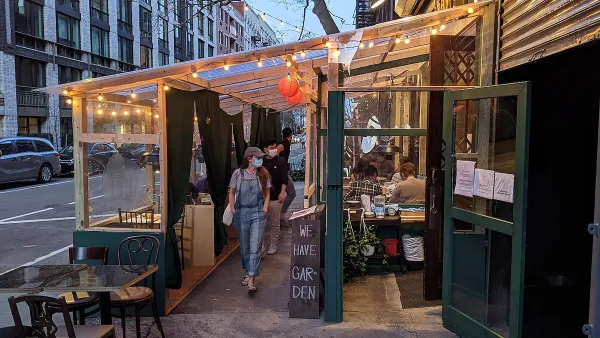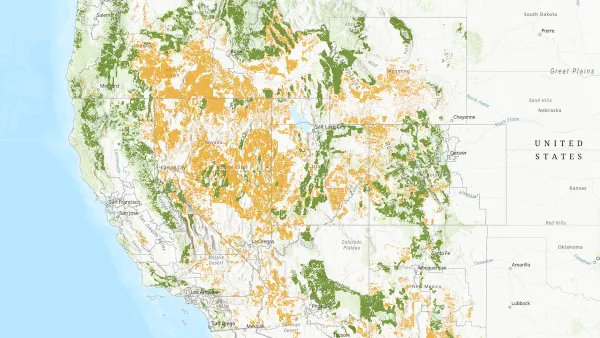New maps created by the Center for Neighborhood Technology show that while emissions are greater per acre in cities, they are greater per household in suburbs.
"Transportation accounts for 28 percent of all US greenhouse gases, according to CNT, and I believe it accounts for an even higher portion of carbon dioxide emissions specifically. According to CNT president Scott Bernstein:
"Cities are more location-efficient - meaning key destinations are closer to where people live and work They require less time, money, fuel and greenhouse gas emissions for residents to meet their everyday travel needs. People can walk, bike, car-share, take public transit. So residents of cities and compact communities generate less CO2 per household than people who live in more dispersed communities, like many suburbs and outlying areas.
"If you're deciding where to live, consider moving to an urban area. You'll help fight global warming by emitting less CO2. And you're likely to drive less, so you'll spend less on transportation, saving up to $5,000 annually.""
FULL STORY: Dramatic new maps of CO2 emissions per household

Planetizen Federal Action Tracker
A weekly monitor of how Trump’s orders and actions are impacting planners and planning in America.

Restaurant Patios Were a Pandemic Win — Why Were They so Hard to Keep?
Social distancing requirements and changes in travel patterns prompted cities to pilot new uses for street and sidewalk space. Then it got complicated.

Map: Where Senate Republicans Want to Sell Your Public Lands
For public land advocates, the Senate Republicans’ proposal to sell millions of acres of public land in the West is “the biggest fight of their careers.”

Orange County, Florida Adopts Largest US “Sprawl Repair” Code
The ‘Orange Code’ seeks to rectify decades of sprawl-inducing, car-oriented development.

Maui's Vacation Rental Debate Turns Ugly
Verbal attacks, misinformation campaigns and fistfights plague a high-stakes debate to convert thousands of vacation rentals into long-term housing.

San Francisco Suspends Traffic Calming Amidst Record Deaths
Citing “a challenging fiscal landscape,” the city will cease the program on the heels of 42 traffic deaths, including 24 pedestrians.
Urban Design for Planners 1: Software Tools
This six-course series explores essential urban design concepts using open source software and equips planners with the tools they need to participate fully in the urban design process.
Planning for Universal Design
Learn the tools for implementing Universal Design in planning regulations.
Heyer Gruel & Associates PA
JM Goldson LLC
Custer County Colorado
City of Camden Redevelopment Agency
City of Astoria
Transportation Research & Education Center (TREC) at Portland State University
Camden Redevelopment Agency
City of Claremont
Municipality of Princeton (NJ)





























